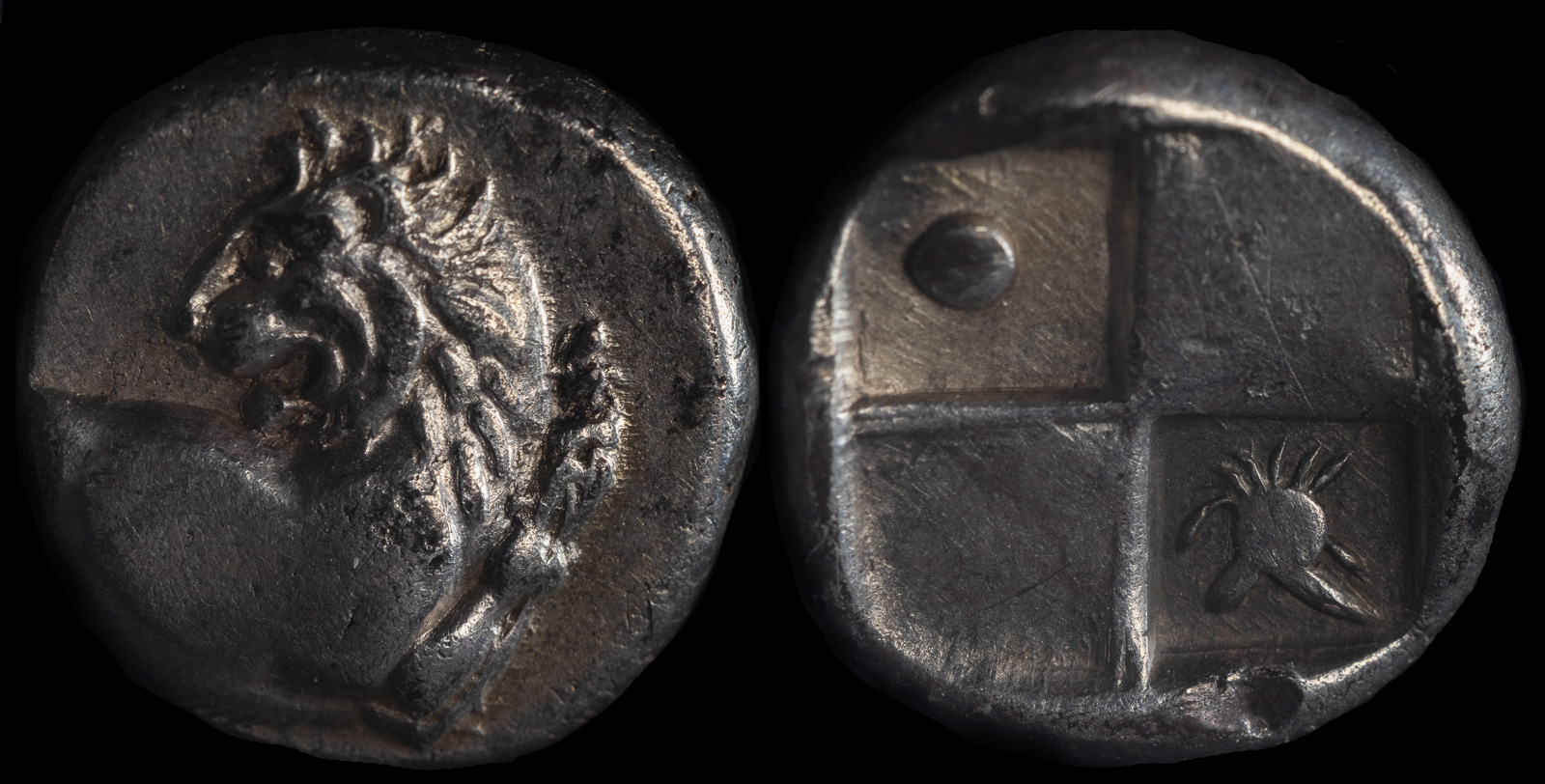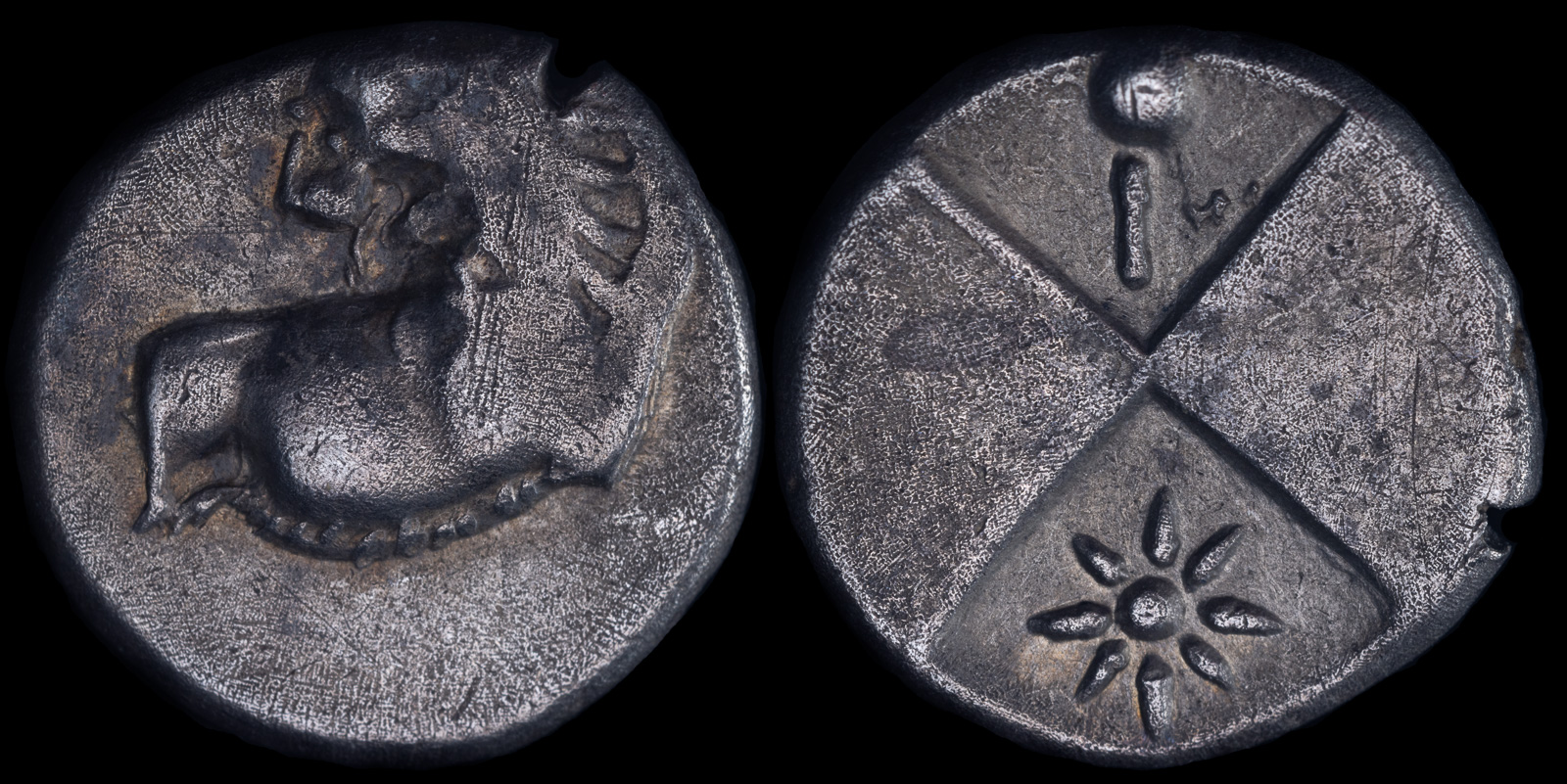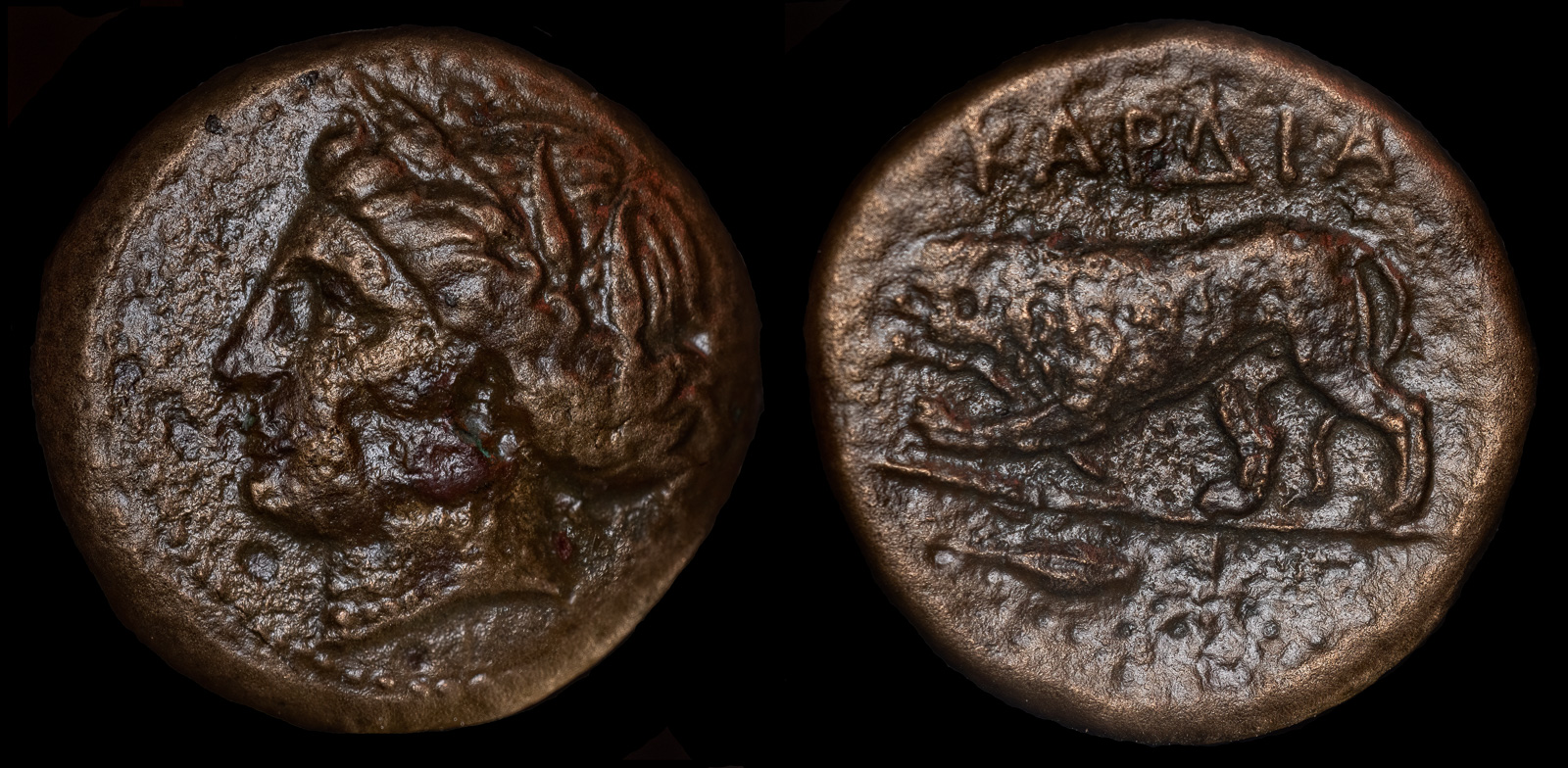
386-338 BCE
AR Hemidrachm 12mm 2.4g
Obv: Forepart of lion, right, looking back
Rev: Quadripartite incuse square with raised and sunken quarters, pellet in one quarter and crested helmet in the other
SNG Berry 502
Most know Kardia from the widespread hemidrachms that are usually labeled as Chersonesos.

386-338 BCE
AR Hemidrachm 13mm, 2.3gms
Obv: Forepart of lion right, looking back
Rev: Quadripartite incuse square with raised and sunken quarters, I-pellet in one quarter and star with eight rays in the other
McClean 4107
Kardia played a relatively unknown but key role in the trajectory of Philip II and Alexander III. Perhaps the best article I’ve read on the subject is The Coinage of Kardia by Julia Tzvetkova. The city was originally founded as a colony of Miletos and Klazomenai. You can see the influence for the lion on this coin from Miletos.
Later on, it was additionally colonized by Athens, which would play a growing role in the city. At some point, Kardia was controlled by the Odrysian kings – especially Kotys I and his son Kersebleptes. It’s widely believed that some of their coinage was minted in Kardia, and it was one of their principal cities.

circa 350-309 BCE
Æ 21 mm, 8,09 g
Obv: Wreathed head of Persephone left wearing pendant earring and necklace
Rev: KAPDIA; Lion standing left breaking a spear held in its mouth; star below, kernel of grain in exergue
SNG Cop. 864
When Athens gained influence in Thrace, Kardia was always the exception. All that changed, though, with a new guy on the field – Philip II.
Through diplomacy and arms, Philip II overran the Odrysian kings. Per Tzvetkova, this is when the Kardia bronzes began minting. Before then, they minted Odrysian coins. Kardia itself was never besieged by Philip, but instead signed an agreement with him. Through the reigns of Philip and Alexander, it remained independent but was a strong ally of Macedonia. When Athens attempted to interfere, Philip was quick to act, resulting in a famous speech from Demosthenes predicting Philip‘s ultimate goal.

circa 309-220 BCE
Æ 11mm, 1,69g
Obv: Lion advancing left.
Rev: KAPΔIA.
Barley corn within linear square.
BMC 15
Were my copy a bit sharper, you would see a spear in the lion’s mouth. You can clearly see a spear below the lion. Tzvetkova speculates that this image, similar to those of Amyntas III, could emphasize Kardia’s friendship with Macedon, but states that there’s no way to know for sure. In fact, due to the lack of find data, she found it wasn’t possible to give any ordering of the bronze coinage or more specific dates.

Circa 350-309 BCE
Ae 12mm, 2.1gms
Obv: Panther (or lion) standing left
Rev: KAP-DIA around barley corn, all within linear square
Tzetkova IV.a.1 without monogram
The coinage of Kardia likely ended with the city’s destruction by Lysimachos in 309 BCE. The populace was then moved to the newly created Lysimacheia.
Perhaps even more telling of how close Kardia and Macedonia were was the presence of several Kardians among Alexander‘s most trusted companions.
Eumenes – He was Alexander‘s scribe and later played famous games in the desert with Antigonos I Monophthalmos.
Hieronymos – A famous historian for Alexander, Eumenes, and Antigonos. Sadly, his works are now out of print.
Relevant Resources
Link
The Coinage of Kardia by Julia Tzetkova